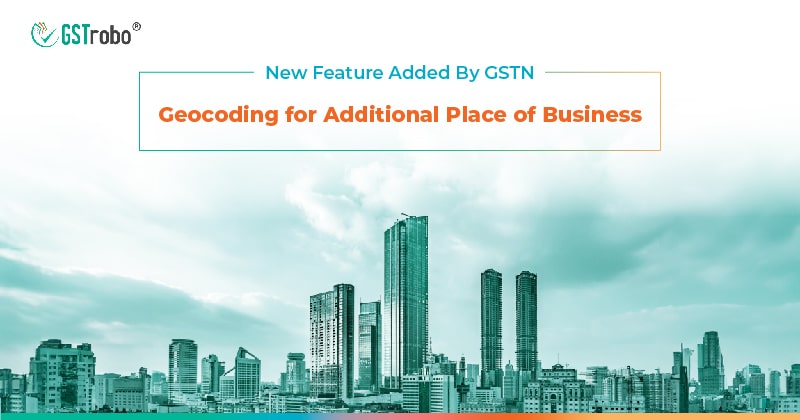Geocoding for Additional Place of Business: New Feature Added By GSTN
For taxpayers, geocoding their principal place of business address is compulsory when registering a GST account, as decided by the Goods and Services Tax Network in February 2023. After the successful implementation and good feedback on the latest feature, now the GSTN has introduced an additional feature of geocoding their “additional place of business” address.

The feature is being implemented for all states and union territories. As of September 2023, GSTN has witnessed geocoding of 2.05 crore businesses for both principal and additional place of business address.
What is Geocoding?
Geocoding is the process of converting addresses into geographic coordinates (like latitude 37.423021 and longitude -122.083739), which you can use to place markers on a map or position on a map. It’s a fundamental process in Geographic Information Systems (GIS) and location-based services.
In terms of GST taxpayer, when a new person registers for GST service, he must map his current place of business on the GST portal via the geocoding process that lets the authorities know his location coordinates and spatial data.
How To Use Geocoding Feature For “Additional Place of Business”
i. How To Access Geocoding Functionality
Navigate to Services>>Registration>>Geocoding Business Addresses tab on the FO portal to find the Geocoding Functionality.
ii. How to Use
The GSTN system displays a system-generated geocoded address. You can either accept this or modify it as per your requirements. You can also directly input the geocoded address if the system doesn’t generate the address.
iii. How to View Your Geocode
Your saved geocoded address details are available under the “Geocoded Places of Business” tab. After logging in, go to My Profile >> Geocoded Places of Business.
iv. One-time Submission
This is a one-time activity, and address revisions are not allowed post-submission. Taxpayers who have already geocoded their addresses through new registration or core amendment would not be required to do this as on the GST portal; their addresses will be shown as geocoded.
Changes to the address on your registration certificate can only be made through the core amendment process. This geocoding feature will not affect previously saved addresses.
v. Check Eligibility
This feature is accessible to normal, composition, SEZ units, SEZ developers, ISD, and casual taxpayers to check if they are active, canceled, or suspended.
How Geocoding Helps Businesses and Authorities
Geocoding is a valuable tool for Goods and Services Tax (GST) for several reasons:
1. Location-Based GST Management
A taxpayer is charged GST based on the supplier’s location and the recipient’s. Through Geocoding, the authorities can accurately determine the location of both parties involved in a transaction, which helps correctly calculate the GST rate and comply with regional tax regulations. It further allows authorities to determine the correct “place of supply” to apply the right GST rules on taxpayers.
2. Correct Input Tax Credit (ITC) Calculation
In GST, businesses can claim an Input Tax Credit (ITC) for the tax paid on their purchases. Geocoding helps verify suppliers’ location, ensuring that the ITC claims are accurate and compliant with GST rules.
3. Track Bogus Registrations
To claim wrongful Input Tax Credit (ITC), bogus registrations are quite commonly witnessed. Geocoding is a great way to track and detect these fake companies that help authorities curb the onslaught of tax evasion and wrongful ITC claims.
4. Tax Jurisdiction Compliance
Different regions or jurisdictions within a country may have distinct GST rates and rules. Geocoding assists businesses in determining the specific tax jurisdiction for each transaction, reducing the risk of non-compliance.
5. Tax Reporting and Filing & Audit Trail Transparency
Geocoded data can be used to generate accurate GST reports and returns. This feature helps simplify the process of compiling transaction data. It also helps track whether the businesses correctly report taxes to the relevant tax authorities. It further helps accelerate transparency in the GST compliance process by providing an audit trail by associating geographic coordinates with each transaction.
Conclusion
Overall, geocoding is crucial in ensuring businesses comply with GST regulations, accurately calculate and report taxes, and maintain transparency in their transactions. It helps businesses avoid costly errors, reduce non-compliance risks, and streamline their GST-related processes, ensuring consistent accuracy and standardization in their compliance journey.

